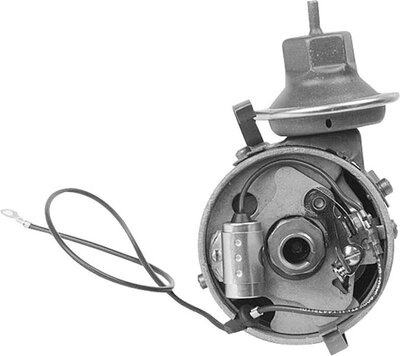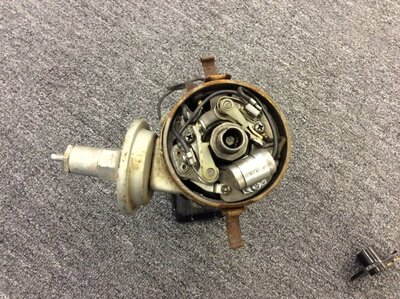I've been noodling over this issue for a day now. This spring I pulled a very tired 440 out of my car and replaced it with a fresher 383. The 440 had a Mopar Performance electronic ignition setup on it, and it worked well.
Because of that, I purchased a new electronic distributor from a well known eBay seller, to use with the 383. The engine started right up and I fiddled a bit with it to get it to the point where it would sit and idle, albeit not terribly well. Played with the distributor position some, but it didn't seem to respond like I expected. I then started getting loud 'bangs' out of the exhaust pipes, seemingly at random. My first thought was the timing must be badly retarded, as the exhaust certainly didn't smell like it was running overly rich.
I then figured maybe my ear wasn't as good at setting timing as it used to be, so went and got my timing light (which I've probably not used for 5+ years). Disconnected the vacuum advance, plugged the line, put the light on and looked at the timing marks with engine idling.
Played with it a little and left it at 8-10 degrees before TDC. The engine sounded good, and idled very well. Hooked up the vacuum advance and the engine immediately started running rougher, with the bangs in the tail pipe again. Put the light on the marks again and the timing was now 12 degrees or so after TDC.
I couldn't believe what I was seeing so I did everything over again, and got the same result every time I hook up the vacuum advance.
I've not torn into the distributor yet and have not come up with a theory on why it's acting this way. I assumed the vacuum diaphragm just moves the plate in the distributor like every other one I've worked on. I'm at a loss as to why it would be moving it in the wrong direction.
Anyone seen this before?
Because of that, I purchased a new electronic distributor from a well known eBay seller, to use with the 383. The engine started right up and I fiddled a bit with it to get it to the point where it would sit and idle, albeit not terribly well. Played with the distributor position some, but it didn't seem to respond like I expected. I then started getting loud 'bangs' out of the exhaust pipes, seemingly at random. My first thought was the timing must be badly retarded, as the exhaust certainly didn't smell like it was running overly rich.
I then figured maybe my ear wasn't as good at setting timing as it used to be, so went and got my timing light (which I've probably not used for 5+ years). Disconnected the vacuum advance, plugged the line, put the light on and looked at the timing marks with engine idling.
Played with it a little and left it at 8-10 degrees before TDC. The engine sounded good, and idled very well. Hooked up the vacuum advance and the engine immediately started running rougher, with the bangs in the tail pipe again. Put the light on the marks again and the timing was now 12 degrees or so after TDC.
I couldn't believe what I was seeing so I did everything over again, and got the same result every time I hook up the vacuum advance.
I've not torn into the distributor yet and have not come up with a theory on why it's acting this way. I assumed the vacuum diaphragm just moves the plate in the distributor like every other one I've worked on. I'm at a loss as to why it would be moving it in the wrong direction.
Anyone seen this before?


















